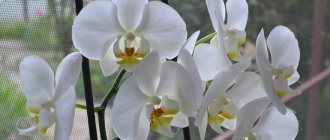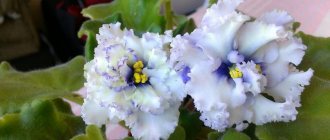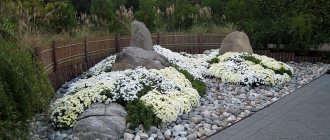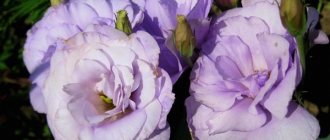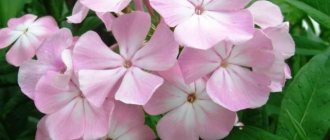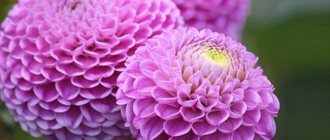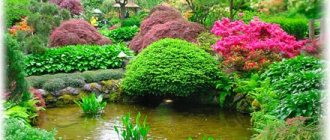Photo: totalhub.ru Petunia deservedly receives the love and admiration of gardeners around the world. Few annuals can compare with it in the variety of varieties, shapes and sizes. You can plant a whole flowerbed of petunias, and each bush will be different from the previous one. We tell you how to properly care for this capricious beauty!
general information
Petunia is a bushy ornamental flower with creeping or straight shoots. It has expressive oval leaves up to 12 cm in size and a deep dark shade. Most often, the plates are pubescent, and bright petals look especially elegant against their background.
Petunia bushes can grow up to 0.7 m, but there are very tiny varieties up to 15-20 cm. On short peduncles, funnel-shaped flowers with regular or double inflorescences open wide. When growing indoor varieties, keep in mind that petunia flowers can have a very strong smell.
Breeders and gardeners have been dealing with petunias since the eighteenth century. The now popular hybrids began to be bred about a hundred years ago to decorate the balconies of mansions. Then they migrated to flowerpots, and soon filled the gardens.
Photo: pixabay.com
Classification by flower shape
If you look at the photo of petunia flowers, you will see that they come in different varieties: simple (like a bell), fringed (with a carved edge), double (with multiple petals). This explains the division of varieties according to flower shape.
simple flower
Most varieties have simple flowers - funnel-shaped, consisting of five fused petals.
Varieties: Daddy, Ramblin, Diamond, Velvet, Shock Wave and many others.
Varieties of petunias with simple flowers
double flower
It consists of many petals, so the flower as a whole looks lush and stuffed.
Well-known variety series:
- Double Cascade (Double Cascade) - bush terry petunia, produced by Pan American (USA). The flower is clove-shaped, large, up to 13 cm in diameter. The bush is lush, 25-40 cm high.
- Pirouette (Pirouette) - bush petunia, originator Pan American (USA). The plant is compact, 30-40 cm high. The flowers are double, with corrugated petals, 10-13 cm in diameter.
- Tumbelina (Tumbelina) - ampelous vegetative petunia with double flowers, producer Florensis (Netherlands). Strong shoots form a dense ball with fragrant flowers. The diameter of the flowers is 6-7 cm.
- And others: Duo (Duo), Valentine (Valentine), Pan-Velvet, Origami (Origami).
Below is a photo of double petunia flowers:
Varieties of petunias with double flowers
fringed flower
Petunia flower with a fringed, corrugated edge. It looks very impressive, creates the impression of openwork and lightness.
Varieties:
- Frillytunia (Frillitunia) - bush petunia from Floranova (UK). The bush is powerful, with thick stems and large leaves, up to 30-35 cm high. A very beautiful flower - funnel-shaped, with lacy edges. Flower diameter 10-12 cm.
- Alba (Alba) is a petunia from the Superbissima (excellent) group of Czech selection from the Cerny Seed Company. A bush with strong thick stems, up to 40 cm high. The flower is very large - about 16 cm in diameter, with wavy, scalloped edges.
- And others: Karkulka, Congratulations from Jaromerže, Krajkovi zavoj, Lacemaker.
Varieties of petunias with fringed flowers
Please note that each classification describes only one characteristic of a petunia - flower size or shape, plant shape, type of propagation. Therefore, any variety will simultaneously belong to several classification options. For example, the Double Cascade Blue variety is a bushy, double, large-flowered petunia (grandiflora), seed propagated. And Cascadias Rim Magenta is a vegetative ampelous multiflora with a simple flower.
Types of petunia
All varieties of petunias are divided into two large categories - multi-flowered and large-flowered. They are also called multiflora and grandiflora, respectively. There are several intermediate categories and a whole garden group that covers dozens of different subspecies.
Petunia Fantasy
This is a compact variety from the multiflora category with red, crimson, salmon and pink flowers. Less common are purple, white, blue and cream hybrids. Multiflora petunias bloom earlier, are not picky and are better suited for gardens. The diameter of the flowers is about 5 cm, but there are a lot of them and they are unpretentious.
Photo: rotarygardens.blogspot.com
Petunia Plum Crystal
An interesting feature of Plum Crystal petunia is its ability to change the shade of its petals. Gradually they fade from lilac to almost whitish. The flowers are decorated with dark and expressive burgundy-violet veins.
Photo: oir.mobi
Petunia Dormouse
Dormouse is a floribunda petunia with large flowers that look especially good in a mass. The series is notable for its wide variety of colors. For example, raspberry or burgundy with a white center or pale lilac with dark purple streaks.
Photo: solo-semena.ru
Petunia Picoti
Large and expressive ruffled flowers are the main feature of this small category of grandiflora petunias. Bushes up to 25 cm will be an ideal decoration for terraces, gazebos and open balconies. The rich crimson-red or violet-blue hue is emphasized by the white edging.
Photo: oir.mobi
Petunia Celebrity
Another series of floribunda petunias is notable for its unusual colors. It includes varieties with two-color or three-color petals. They are resistant to rain and heat, so they get along well in the garden or open boxes.
Photo: fedsp.com
Petunia Surfinia
Small garden petunias Surfinia are also called balcony petunias, although the series includes varieties of different sizes. The diameter of tiny Mini Pink flowers is up to 0.5 cm, and large hybrids are up to 9 cm. The palette has all possible shades, except yellow-orange.
Photo: oir.mobi
Tree hydrangea: varieties, care features (60 photos)
Unpretentious
Small-flowered bush and ampelous petunias are considered the most unpretentious. They do not suffer from summer temperature changes, quickly restore the shape of their petals after rain and wind, and bloom profusely until late autumn.
Surfinia, which is classified as a petunia, is distinguished by its unpretentiousness and abundant flowering. It is planted in hanging pots and flowerpots, as it forms lush bushes with hanging shoots.
Storm is a group of varieties of large-flowered petunia, recently bred. The plants are distinguished by their bright, long-lasting flowering and resistance to adverse weather conditions.
Multi-flowered petunias are easy to maintain and withstand the vagaries of the Russian climate. Interesting varieties:
- Alderman (blue);
- Angelica (light yellow).
Storm Lavender
Alderman
Petunia care
It is difficult to find a more versatile flower that can be equally successfully grown on a window, in hanging flowerpots, balcony boxes, greenhouses and gardens. Except that in our climate, perennials in open ground turn into annual varieties.
Temperature
Petunia really needs warmth - and this is precisely the reason why it does not winter in our climate. The ideal temperature for germination is above 23 degrees. Be sure to avoid sudden changes and always accustom the flower to new conditions gradually. Ideally, during the day it should be about 18-20 degrees, and at night - at least 15.
Photo: dachnaya-zhizn.ru
Lighting
Petunia loves light very much, and this is a fundamentally important criterion for flowering. Therefore, if you plant seedlings at the end of winter, they will most likely have to be illuminated with phytolamps. If the seedlings are too dark, they will grow weak and sickly, and mature bushes will begin to wither.
Photo: u-florista.ru
Watering
Petunias need moderate watering because both extremes are fraught with problems. If the soil dries out too much, the flower will dry out along with it, and due to excess water the plant will rot. Pour water carefully, because it is important not to flood the stem and leaves.
Photo: 2sotki.ru
The soil
Petunias definitely need loose soil based on deciduous soil or turf. You will need good fertilizers to help the soil absorb nutrients. Add sand and peat to the substrate to provide it with the desired loose texture.
Photo: rastenievod.com
Fertilizers and fertilizing
Like all flowering plants, petunias need regular, systematic feeding. Already a week after planting, the first portion of fertilizers is applied to the ground, and the next - every week and a half until the end of summer. Occasionally, instead of ready-made complex fertilizers, apply organic fertilizers. Keep in mind that fungal diseases often develop due to manure.
Photo: comfortclub.ru
Transplantation and propagation
If you have enough warmth and light, then ampelous and double varieties can be propagated by cuttings all year round. Take apical cuttings with 4-6 leaves and tear off all but the top two. After this, plant the cuttings immediately in the seedling substrate, but for the first time sprinkle them with perlite on top.
Young petunia shoots take root in 1-2 weeks, depending on the variety and conditions. Grow them in separate pots and pinch them as they grow so that they bush beautifully in the future. By the way, after pinching, cuttings can be used again as cuttings for propagation.
If you are growing seeds, sow them in February (with lights) or late March (without). Combine them with sand and spread them over the moistened substrate. Leave the boxes in a warm place under glass or transparent film for at least a week, until the first seedlings sprout. Don’t forget to ventilate your improvised greenhouse a couple of times a day.
Photo: 2sotki.ru
Wintering
Petunia is a perennial, but to preserve it, you will have to dig up the flower by mid-autumn. Trim all the shoots, transplant the bush into a pot and move it to a cool, dark place with infrequent watering. At the end of winter, place the flowerpot on the windowsill, gradually increase the frequency of watering and gradually introduce the petunia to the daily rhythm of life.
Photo: posaju.ru
Hydrangea (80 photos): types and features of care
Use in landscape design
Bush petunia is suitable for bringing to life the most creative designer solutions. Flowerbeds can be planned even purely from them, playing with the colors of the buds, the size of the bush, and the shape of the plant. You can plant petunia on an alpine hill, or you can mix plantings of bush and climbing petunias. Flowerpots with flowering bushes can be displayed in recreation areas, and hanging flowerpots can decorate country verandas.
Petunia in landscape design will look spectacular anywhere
Note! Bushes are great for decorating paths. Yellow petunia looks especially beautiful against the background of green trees and shrubs. You just need to remember that the distance to other plants should be sufficient. Petunia is growing well.
For any gardener, petunia is a real gift. With simple care, it can delight with lush flowering until frost.
Pest and disease control
The main pest of petunia is spider mites, which are difficult to notice until there are too many of them. There are also thrips that leave dried whitish streaks on the leaves. And the third invisible enemy is aphids, which provoke the appearance of fungus and infections. The control mechanism is the same in all cases - timely and regular treatment with insecticides.
Powdery mildew is a type of fungus that appears as a white coating on the leaves. Gray rot develops due to excess moisture or improper care. Blackleg is a rare aggressive disease that literally “burns out” seedlings. With such diseases, it is fundamentally important to urgently stop their spread and remove all damaged plants.
Photo: zverjata.ru
Ageratum (70 photos): types and features of care
Features of reproduction
You need to remove petunia from the garden and plant it in a pot in the fall. After a certain time necessary for them to rest, the plants can bloom again. Petunia is also propagated by cuttings. This is more relevant for hybrids, since it is impossible to get seeds from them.
- For cuttings, remove the necessary specimens from the garden, and then put them in a cool place for storage for the winter.
- In March, take cuttings from the plant.
- Remove the lower leaves, leaving only 2-3 pairs at the top.
- Before planting, place the cuttings in Kornevin for a few minutes.
- Place the cuttings in water for rooting, or you can immediately stick them into light soil and cover with polyethylene.
- As soon as new leaves begin to form, remove the polyethylene so that the plant gradually gets used to the microclimate.
- After just a week, remove the covering material completely.
Petunia – photo
Petunia is a bright and hardy plant that causes almost no problems, but at the same time decorates the garden. Look how beautiful and impressive it looks in the flowerbed until late autumn!
Photo: oir.mobi
Photo: goodfon.ru
Photo: petunii.ru
Photo: zen.yandex.ru
Photo: teplica-one.ru Photo: greensotka.ru
Photo: solo-semena.ru
Photo: vk.com
Photo: pxhere.com
Photo: oir.mobi Photo: stroy-podskazka.ru
Photo: fruitree.ru
Photo: art-pen.ru
Photo: mir-ogorodik.ru
Photo: sm-news.ru
Photo: pixabay.com
Photo: botanichka.ru
Photo: plantclub.com.ua
Photo: domashniecvety.ru
Photo: kpravda.ru
Photo: infourok.ru
Photo: lalend.ru
Photo: t.me
Photo: pxfuel.com
Photo: riafan.ru
Photo: posadkavgrunt.ru
Photo: oir.mobi
Did you like the post? Subscribe to our channel in Yandex.Zen, it really helps us in our development!
Possible problems
When growing bush petunia, the following problems are possible:
- Stretching of shoots , small number of flowers. This occurs in insufficient lighting and low air temperatures. So it is best to grow the flower in a sunny place.
- Slight flowering . Immediately after the flower has faded, it must be removed. Otherwise, the plant will spend a lot of energy on ripening the fruits.
- Fungal disease . The main reason for their development is the use of fresh humus for feeding.
Bush petunia is a real find for lovers of bright and colorful flowers. When planted, it will bloom and decorate the flowerbed throughout the summer and until frost. And this will require full care and attention.
Vegetative
Most of the hybrids of this plant are qualitatively propagated by seeds. But there are also varieties for which the cutting method is acceptable for procreation. In the classification, such varieties are called vegetative.
The main characteristics of these petunias include:
- small size;
- hanging or erect stems;
- double or simple flowers;
- various colors.
Vegetative petunia is represented by the following varieties.
"Plus papaya"
A small bush with an impressive number of bright orange flowers. Calmly tolerates temperature changes. Designed for cultivation in pots.
"The Cardinal's Surprise"
Low, densely branched plants with abundant flowering. The buds are burgundy-purple. Grows on lawns and in pots.
"Tumbelina Maria"
An ampelous garden group of petunias, intended for cultivation in hanging structures. A small cup of bluish-lilac color with a terry structure.
New, unusual varieties
More and more new varieties are appearing in the assortment of flowerbed and balcony varieties that deserve special attention. The main emphasis of breeders is on the uncharacteristic color of petunias.
Attention! Currently, new hybrids have received the greatest attention from flower growers, the distinctive feature of which is “black” flowers.
Taking into account the latest trends, the following varieties have gained wide popularity:
- "velvet";
- "cherry".
Velvet
Cherry
